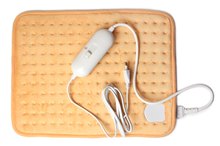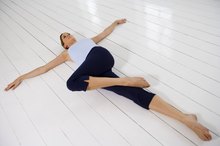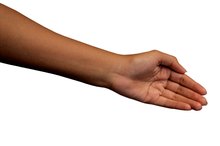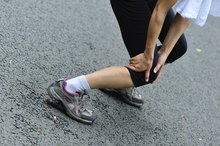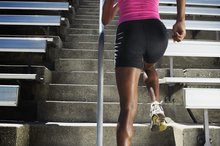What does fact checked mean?
At Healthfully, we strive to deliver objective content that is accurate and up-to-date. Our team periodically reviews articles in order to ensure content quality. The sources cited below consist of evidence from peer-reviewed journals, prominent medical organizations, academic associations, and government data.
The information contained on this site is for informational purposes only, and should not be used as a substitute for the advice of a professional health care provider. Please check with the appropriate physician regarding health questions and concerns. Although we strive to deliver accurate and up-to-date information, no guarantee to that effect is made.
Stretches to Reduce Muscle Inflammation
Most cases of muscle inflammation result from overuse, either due to starting a new activity or doing an increased amount of a familiar activity. Several types of stretches can help you reduce inflammation and stiffness. If muscle soreness is persistent, chronic and accompanied by weakness, you should have it evaluated and treated by your doctor.
If you are experiencing serious medical symptoms, seek emergency treatment immediately.
Benefits of Stretching for Inflammation
When you are using your muscles, a small amount of damage occurs in the fibers of the muscle. The more intense the exercise, the more damage occurs. Inflammation develops as your body does the necessary repairs to the muscles. If you are staying sore after exercise, you may not be taking enough time between vigorous workouts. Only return to intense exercise after the soreness and inflammation are gone. Stretching helps to increase blood flow and nutrition, reducing soreness and speeding recovery.
- When you are using your muscles, a small amount of damage occurs in the fibers of the muscle.
- If you are staying sore after exercise, you may not be taking enough time between vigorous workouts.
Static Stretches
How to Relieve Sciatic Pain in the Pelvic & Hip Joints
Learn More
A static stretch is one done with a held position. A good example would be reaching down to touch your toes. Reaching as far toward your toes as you can, hold that position for 30 to 45 seconds to allow the muscle spindle to release and lengthen. Apply this type of stretch to your inflamed muscle by stretching it out and holding it for the prescribed time. This type of stretch is also good for reducing stiffness.
- A static stretch is one done with a held position.
Ballistic Stretches
If you are quickly repeating the stretch position and releasing it, you are doing ballistic stretching. An example of this stretch would be alternating toe touches. Reach down with your right hand toward your left foot, then straighten back up. Next, reach down with your left hand toward your right foot and then return to standing. This form of stretching stimulates blood flow and helps to reduce both soreness and stiffness.
- If you are quickly repeating the stretch position and releasing it, you are doing ballistic stretching.
- Next, reach down with your left hand toward your right foot and then return to standing.
PNF or CRAC Stretches
Exercises for Sciatic Nerve Spasms
Learn More
A third type of stretching is the proprioceptive neuromuscular facilitation or PNF, and the contract-relax-antagonist-contract or CRAC. With these stretches, you start by doing an isometric contraction of the muscle for at least 20 seconds, followed by a stretch 2. The stretch usually requires a partner or therapist to assist you. This form of stretching helps inflammation because it increases circulation. It also creates increases in flexibility greater than other forms of stretching.
- A third type of stretching is the proprioceptive neuromuscular facilitation or PNF, and the contract-relax-antagonist-contract or CRAC.
- It also creates increases in flexibility greater than other forms of stretching.
Related Articles
References
- Harvard Health Publications: Stretching and Strengthening Are Key to Healing and Preventing Back Pain
- FitDay: Prevent Muscle Soreness with These 10 Stretches
- Complete Strength Training: What PNF Stretches Are & How To Do Them
- Columbia Health: Go Ask Alice -- Is It Okay to Stretch When I am Still Sore?
- Trehearn TL, Buresh RJ. Sit-and-reach flexibility and running economy of men and women collegiate distance runners. J Strength Cond Res. 2009 Jan;23(1):158-62.
- Andersen, J. C. Stretching Before and After Exercise: Effect on Muscle Soreness and Injury Risk. Journal of Athletic Training 40(2005): 218-220
- Herbert RD, de Noronha M. Stretching to prevent or reduce muscle soreness after exercise. Cochrane Database of Systematic Reviews 2007, Issue 4.
- Ian Shrier MD, PhD and Kav Gossal MD. The Myths and Truths of Stretching: Individualized Recommendations for Healthy Muscles, The Physician and Sportsmedicine, VOL 28, #8, August 2000.
- Witvrouw, Erik, Nele Mahieu, Lieven Danneels, and Peter McNair. Stretching and Injury Prevention An Obscure Relationship. Sports Medicine 34.7(2004): 443-449
Writer Bio
Greg Cooper began writing in 2007 with his book "The Reasonable Radical." He completed undergraduate work at West Virginia University and received his Doctor of Chiropractic from Sherman College. Cooper taught spinal manipulation in orthopedic hospitals in China and was part of a sports medicine team for the 1992 Olympic trials.
